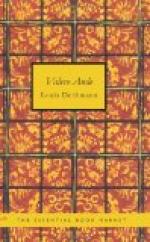Indeed the instincts of both animals and human beings lead them under certain conditions right back to the rock and its lesson. Note the avidity with which hens confined in arid runs devoid of vegetation, worms, insects and small stones devour a compound of lime and ground bones and oyster shells. Observe a child whose ration is deficient in mineral elements eating egg shells, wall plaster, chalk and other earthy substances. What do these things mean? Nothing more than this: both chicken and child express a natural craving for the essential elements to build bone and form the basis for the tissue.
I have discussed the important part the minerals play in both the vegetable and animal kingdoms for the purpose of laying stress upon our great need of more of them in our daily diet, and I may add that this is equally as true in the case of those we call healthy as of those who are diseased. No matter how carefully the diet may be regulated as regards the quantity of protein and carbohydrates and fats and the ratio between them, healthy metabolism is impossible without a sufficiency of the essential minerals.
II.
How can we perform this imperative duty to mankind?
The solution of the problem of supplying these essential minerals demands that our soil shall be properly fertilized for the growing of wholesome vegetables and fruits and our cattle properly fed with a ration rich in mineral content. Thus the food which we eat will contain all of the elements necessary to the growth and maintenance of our bodies in a state of health.
In the course of my effort to show why it is imperative that we pay greater heed to the mineral content of our foodstuffs, and why it is imperative that we enrich that content, I have shown basically how that end is to be attained.
In conclusion I will cite the result of a series of experiments in applying the principles of physiological chemistry to poultry, and I may say that it took me twelve years to find the breed which would most readily lend itself to my purpose. I experimented with 250 varieties of hens before I found the one most amenable to my method of feeding and breeding.
While living at Needham, Massachusetts, I made a thorough test of my principles with the selected variety of hens. They were not only fed a ration properly balanced for protein, carbohydrates and fat, but I gave them a liberal supply of properly prepared mineral salts. I used three different mixtures of feed, made up in 100 pound lots, in which the proportion of albumen ranged from 13.50 to 18.00 pounds; of fat from 4.00 to 5.00 pounds; of carbohydrates from 41 to 44 pounds; and actual nutritive salts from 4.50 to 5.00 pounds. The respective ratios being: 1:4, 1:3.5 and 1:3
It is not necessary to enter into discussion of the details of the feeding method and the variation in the daily handling of the hens. The result of this experiment, however, was completely satisfactory, as the eggs produced by those hens not only contained a startling increase in the quantity of mineral salts, but their fertility was far greater than that of hens handled in the usual manner. The increase of fertility in itself is, it seems to me, the best proof of the soundness of my theoretical premises.




